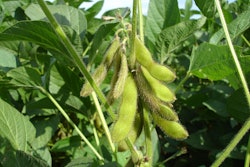
U.S. Weekly Crop Progress Report Overview
US corn planting was 95% complete, which is above the average at 87%.
Corn conditions came in at 76% good to excellent, which compares with 74% last year for the same week.
Soybean planting progress came in at 84% complete, up 9% versus the previous week and well ahead of last year’s 67%.
The winter wheat crop was 79% headed, which is in line with the average at 78% and near last year.
Winter wheat conditions were 48% good to excellent, up one point in those combined categories but were 20% poor to very poor, up one point.
Spring wheat seeding is nearly wrapped up with 97% of the crop planted.
Spring wheat conditions declined two points in the percent rated good to excellent and gained six points in the percent rated poor to very poor.
Cotton planting was in line with average at 64% complete, and the crop was rated 43% good to excellent compared to 44% last year.
FBN’s Take On What It Means: Corn crop ratings in all the major producing states are off to a good start, and are among the highest levels of the last 10 years. The first soybean crop ratings are due to be released next week. While the Midwest forecast is leaning slightly dry, it is early in the crop cycle and soil moisture is adequate across most of the Midwest. The area of concern remains the US Northwest and northern Plains and Canadian Prairies where stress is building for spring wheat and white wheat.

U.S. Soy and Grain Crush Update
Corn used for ethanol in April was 410 million bushels down from 420 million in March, but well ahead of last year’s 245 million.
The corn usage implied ethanol yield at 2.91 gallons/bushel, above the 2.90 gallon average for the marketing year to date.
Sorghum use was below the reportable level for the eighth month in a row.
April Soy crush was 169.9 million bushels, 13.5 million below last year’s record and hit by large maintenance downtimes.
Total crush for September through April is 22.2 million bushels more than last year at a record 1,471 million.
The current USDA forecast is for crush to be up 35 million bushels for the year.
Meal stocks marginally increased 4300 tons to 452,000 as demand fell.
FBN’s Take On What It Means: Corn use remains in line with the USDA estimate for the year, and we expect ethanol demand to increase with that of gasoline into the summer. Soy processor downtimes for maintenance began significantly earlier than normal this year after many plants shortened or skipped their downtime entirely in 2020. This may lead to USDA lowering its crush forecast in a future report.
FBN Market Advisory services are offered by FBN BR LLC, dba FBN Brokerage, FBN BR and FBN Market Advisory (NFA ID: 0508695)
The risk of trading futures and options can be substantial and may not be suitable for all investors. Past performance is not necessarily indicative of future results.
This is not an offer or solicitation in any jurisdiction where we are not authorized to do business or where such offer or solicitation would be contrary to the local laws and regulations of that jurisdiction, including, but not limited to, persons residing in Australia and Canada.










